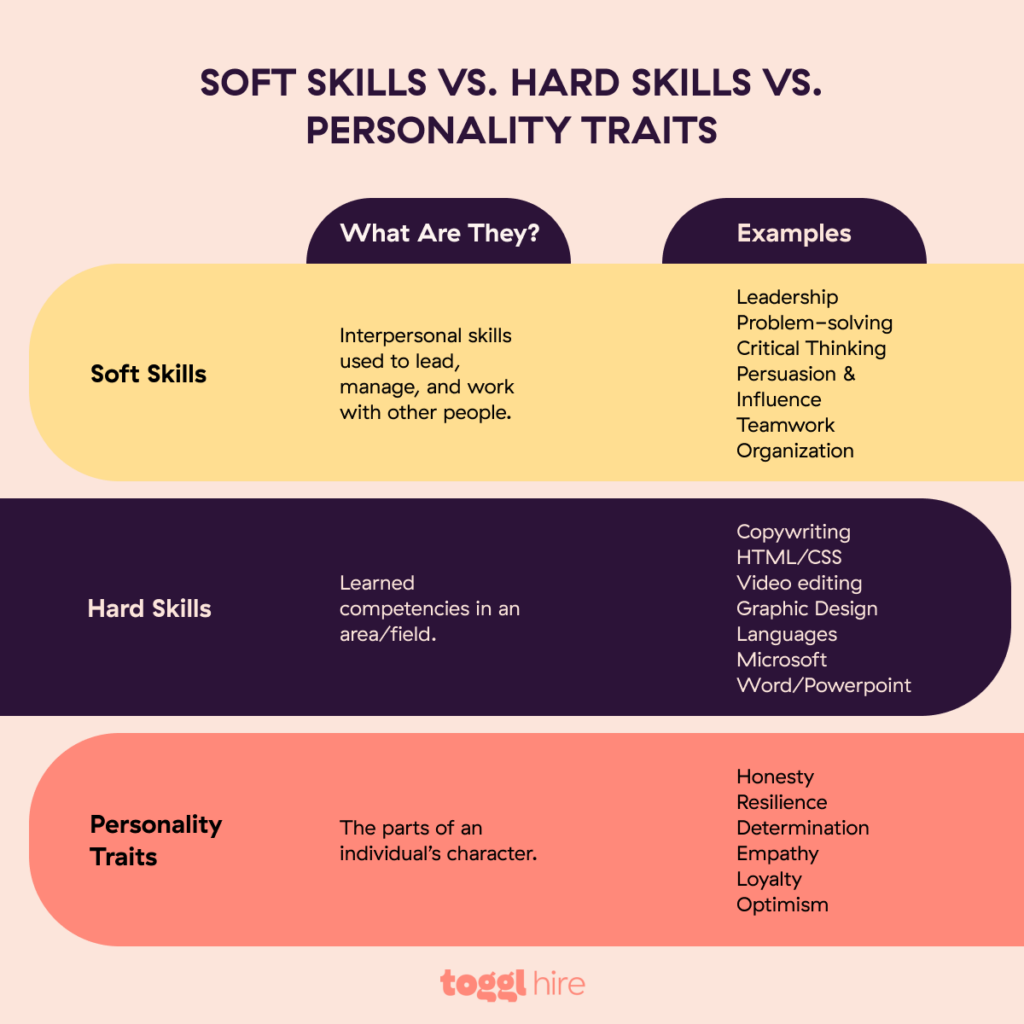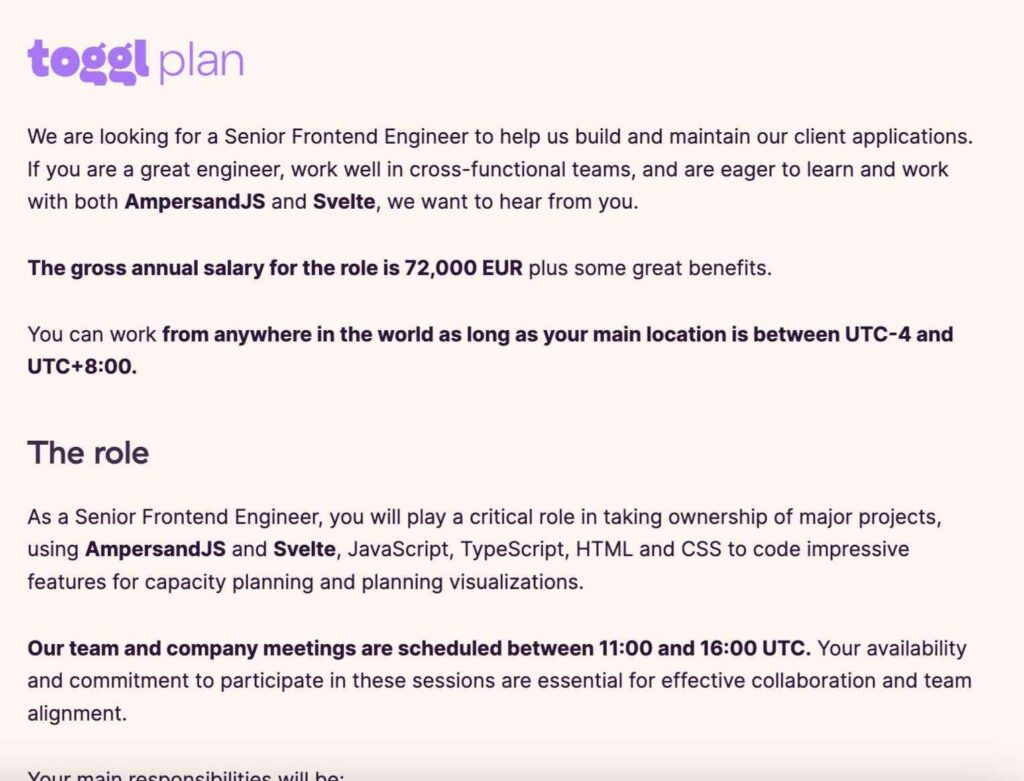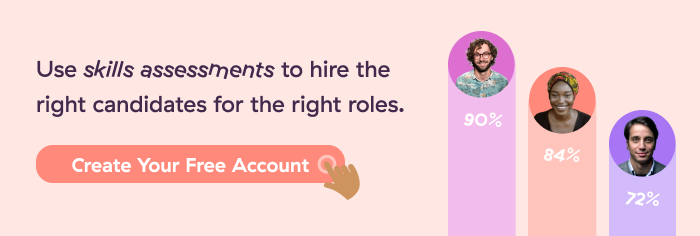Skills and competencies are often lumped together as the same thing, but they are, in fact, two concepts.
For example, we all think we’re great drivers. Knowing how and when to brake, parallel park, or do a three-point turn — these are skills (things you can learn as a driver). Being aware of the traffic around you, being able to make decisions as you drive, and anticipating potential dangers — these are competencies.
To succeed in a role, the ideal job candidate needs both, especially with the growing skills gap in many industries. Today, we’ll show you the key differences between skills and competencies and how to use competency frameworks in the workplace.
TL;DR — Key Takeaways
Skills are abilities that employees bring to a job, allowing them to complete tasks and contribute to company goals. They are learned and applied.
Competencies are broader abilities and behaviors that contribute to success in a role. They are developed through life.
Skills and competencies are equally important for success in any role, and employers should consider both when hiring.
To attract the right candidates, address desired skills and competencies in job descriptions, interviews, and career development statements or initiatives.
Companies can develop a competency framework as a helpful tool for recruitment, talent management, and setting performance expectations.
What are skills?
Skills are the specific abilities that employees bring to the job, enabling them to perform specific tasks and contribute to an organization’s business goals. Skills are learned and applied, and for many organizations, they are the first and most important filter for finding new hires.
Types of skills
Depending on where you get your data from, there are several different classifications of skill types. The most common division is into soft skills and hard skills. Both types of skills are necessary for job success in just about any role.

Soft skills (also known as interpersonal or people skills) are personal abilities and attributes that enable people to collaborate and communicate in the workplace. Examples include communication skills, problem-solving skills, teamwork skills, and others.
Hard skills (also known as technical skills) represent the skills and knowledge required to perform tasks in certain job roles, fields, or industries. Examples of hard skills include computer programming, data analytics software skills, design skills, and others, depending on the specific job requirements.
When hiring for a new role, it’s useful to create a skills matrix with the skills of your existing team. You can download ours for free to save time!
What are competencies?
Competencies are a broader set of abilities and behaviors that contribute to overall success in a role. The ability to prioritize tasks or manage complex projects would be examples of core competencies.
The main goal of such competencies is to provide a framework for assessing and developing employees, as well as defining expectations for job performance.
Types of competencies
There are three main types of competencies in the workplace.
Behavioral competencies, also known as life skills, are a set of practical competencies that people use in their everyday lives to meet their personal needs.
Besides practical skills like managing your finances, these competencies include abilities like interpersonal communication and conflict management. Good behavioral competencies are a necessary foundation for the remaining two types.
Functional competencies are the specific, underlying types of abilities that professionals need to perform well in their daily jobs. Also called technical competencies, they range widely and depend on the role you’re hiring for. Creative thinking and attention to detail are examples of functional competencies for someone in a writing role.
Professional competencies are the abilities that help an employee excel in their industry or role. For example, a good writer may need creative thinking and attention to detail, but their workplace may require resilience and a strong work ethic to fit into a demanding marketing team and move up on the career ladder.

On top of these, we have to mention job family competencies — competencies that are common for a group of jobs. For example, communication, negotiation, and relationship-building competencies are necessary for a good employee in a sales role.
Skills or core competencies: Which is more important for job success?
This is like asking whether the destination or the journey in life is more important: you can’t look at either of them in isolation.
In the workplace, skills are crucial because they represent how well someone can do their job and whether they can excel at certain tasks. Key skills for any given role are easy to measure and evaluate. For example, how quickly someone can design a functional landing page or book a successful sales call.
Competencies are just as important because they represent someone’s ability to lead, make critical decisions, manage deadlines and people, and much more. The key difference is that, unlike skills, competencies are notoriously difficult to measure. For example, there is no “real” scale for leadership competency.
When hiring, consider both skills and competencies for every new job title, as they’re both important — just for different reasons.
Here’s a great example:
You may hire someone for a specific skill, such as Python development. However, they may not be a successful employee if all they have is hard skills. To become a team lead or a CTO, they not only need different skills but also a set of competencies and personality traits that will allow them to move up in their career.
Depending on the particular role, you’ll want to prioritize relevant competencies and skills. For example, if you run a machine shop and want to hire a welder, the person’s knowledge and skills in welding will be your primary concern.
On the other hand, if you’re hiring a project manager, you’ll probably prioritize competencies. They will need specific qualifications and a range of hard skills, but the job cannot be done without key competencies like time management, analytical thinking, prioritization, and others.
Ultimately, no job profile focuses either on skills or competencies. It’s always a mix of both, in varying proportions.
How companies use skills and competencies
You may not even be aware of it, but you use skills and competencies every day in your workplace environment, especially for hiring purposes. Don’t think so? These are the most common ways the average business uses skills and core competencies in their day-to-day operations.
Job descriptions
To define what you want from your ideal candidate for a particular job role, you create a job description.
For companies, job descriptions define what they want from potential candidates in terms of relevant skills and technical competencies for a job title. For the applicants, it’s a checklist they go through to determine whether they would be a good fit or not and whether to apply for the job.

In a job description, hard and soft skills are commonly listed as prerequisites for doing a job successfully. Some of these skills and competencies are fairly easy to measure, e.g. five years in a sales leadership role or a basic level of foreign language proficiency.
Others, such as critical thinking, strategic planning, or leadership competencies are not so easy to measure through traditional means such as resumes. This is where skills testing comes in.
Tools like Toggl Hire allow you to test both the technical knowledge and the soft skills of potential candidates, allowing you to vet hundreds of potential candidates in a short time frame. A competency-based job description combined with a skills test is a surefire way to attract and shortlist amazing candidates.
There are also tools such as MAPP (motivational appraisal personal potential) tests for graduates who want to determine the ideal job in line with their skills and competencies.
Core competencies, in this context, typically include a broad range of skills required, attributes, and knowledge for a job role. They are an invaluable tool for describing the broad skill set a candidate should have to contribute to your business goals.
Interview questions
Some interview questions are well-suited to evaluate the skills of the candidate you’re interviewing. For example, asking a potential customer success manager how they resolved a customer objection in a specific situation is an example of an interview question regarding a specific task they do in this role.
There are also behavioral and situational interview questions, where you ask candidates how they (would) behave in certain situations.

For example, “Tell me about a situation where you had to meet a tight deadline. What did you do?” Or, “What do you do when you have to collaborate closely with a difficult team member?”
These questions are extremely useful when determining if the candidate has the right competencies for your specific organization.
Career development
To upskill your existing workforce, it’s crucial to pay attention to their skills and competencies.
Whether you want to promote them into leadership roles or equip them with new skills to fill competency gaps, you can provide your entire organization with training programs to help them get to the next point in their careers.
Working on a core competency (or multiple ones) helps employees advance in their careers. Team leadership, analytical thinking, conflict resolution and competencies similar to these are often a necessity if an employee wants to move up in the organization to a higher-level role.
Whether it’s skills or competencies, it’s crucial that employees never stop learning — it benefits both the employee and the entire organization.
Should you use a competency framework?
A competency framework is a common set of competencies that an organization defines as crucial for an employee to excel in the workplace. While skills are related to a job role, a competency framework establishes those competencies that are necessary for all employees, regardless of their team or role.
Using a competency framework (sometimes called a competency system) has a few advantages:
An easy way to do performance management
Helps guide talent management
A key tool for career assessment
Helps determine who needs training and development
A great asset to your recruitment and talent acquisition
There’s no denying that creating this kind of competency architecture requires additional time and work. However, these frameworks can help you not only with hiring but also with setting expectations, doing succession planning, and in general, improving the performance of your organization.
Hire for job-specific competencies with Toggl Hire
From writing a great job description to improving your talent management process, knowing the distinction between skills vs. competencies can benefit your business.
Once you understand which skills and competencies are most important to your company’s success, however, you’ll need to learn how to attract, screen, and hire candidates with the right ones.
At Toggl Hire, we can help you build skills assessments specific not only for a given job but also for your individual company. Make better, more informed hiring decisions, hire faster, and with more equality.
Sign up today for a free account to see how it works!

Mile is a B2B content marketer specializing in HR, martech and data analytics. Ask him about thoughts on reducing hiring bias, the role of AI in modern recruitment, or how to immediately spot red flags in a job ad.







